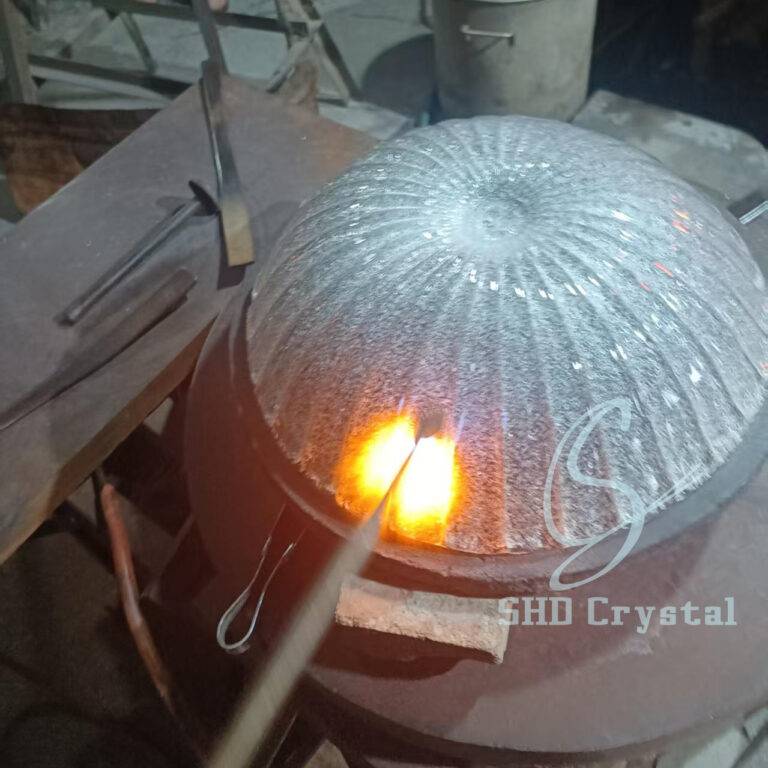> Blogs > Craftsman’s Experience: Tips and Precautions in the Crystal Glass Firing Process
Craftsman's Experience: Tips and Precautions in the Crystal Glass Firing Process
Core Keywords:crystal glass firing
The crystal glass firing process is both an art and a science. Behind every brilliant, transparent piece lies a delicate balance of temperature, timing, and craft skills. As someone immersed in this process daily, I’ve learned that success depends on strict control and attentive observation—every detail matters.

Key Factors That Influence Crystal Glass Firing Results
1. Understanding Your Materials
Not all crystal glass is created equal. Lead content, additives, and coloring agents (such as cobalt or gold chloride) each respond differently under high heat. Knowing the exact composition of your batch is critical before you begin firing. For example, high-lead crystal softens faster and requires more careful thermal ramping.
2. Master the Kiln Curve
The firing curve, or temperature profile, forms the foundation of a successful crystal glass firing process. A standard curve typically involves slow heating to prevent thermal shock, a controlled peak temperature (often around 1300°C for lead crystals), and a gradual cooling phase to reduce internal stress. Skipping or rushing these stages often leads to cracks, warping, or cloudy finishes.
3. Cleanliness is crucial.
Any contamination of the mold or raw glass—dust, fingerprints, or residual oil—can cause defects after firing. Any contamination of the mold or raw glass—dust, fingerprints, or residual oil—can cause defects after firing. Always wear gloves when handling glass pieces and make sure the kiln is thoroughly cleaned of any residual materials. Even microscopic particles can distort the clarity of the final work.
4. Controlling the Atmosphere
Firing in an oxidizing or reducing atmosphere affects the final appearance, especially with colored crystals. An oxidizing environment enhances clarity and brilliance, while reduction may mute or shift hues. For colored crystal bricks or sculptural pieces, this control is essential to achieving uniformity.
5. Annealing Matters
Many beginners underestimate the importance of annealing. The cooling phase must be slow and controlled to relieve stress. A rushed cooldown can result in invisible microfractures, which only appear days or weeks later—especially problematic in large-format glass objects.
Safety and Efficiency in Modern Crystal Glass Firing

Many beginners underestimate the importance of annealing. The cooling phase must be slow and controlled to relieve stress. A rushed cooldown can result in invisible microfractures, which only appear days or weeks later—especially problematic in large-format glass objects.
Modern kilns have greatly improved precision and repeatability in crystal glass firing, but human expertise remains irreplaceable. Every year, numerous craftsmen engaged in glassblowing and high-temperature processing suffer varying degrees of injury due to improper operation or insufficient protection. According to data released by the European Glass Industry Federation (FEVE), in 2023 alone, there were more than 2,000 reported occupational injuries due to high-temperature burns, glass cuts or respiratory irritation. This also reminds us that comprehensive safety training and continuous on-site supervision are essential in crystal glass firing. Therefore, always monitor thermal sensors regularly and calibrate your equipment. Wear protective gear and ensure proper ventilation in the studio—some fumes from additives or binders can be hazardous when heated.
Conclusion
The crystal glass firing process is demanding but ultimately rewarding. For artisans and manufacturers alike, paying attention to the subtleties of temperature, material composition, and kiln behavior is essential. With the right techniques and awareness, you can reduce waste, improve consistency, and create crystals that stand the test of time in both beauty and structure.
The crystal glass firing process is unforgiving but deeply rewarding. For artisans and manufacturers alike, paying attention to the subtleties of temperature, material composition, and kiln behavior is essential. With the right techniques and awareness, you can reduce waste, improve consistency, and create crystals that stand the test of time in both beauty and structure.
At SHD Crystal, we take pride in preserving traditional hand-blown glass techniques while integrating modern quality controls. Every piece is shaped by experienced craftsmen using ancient mouth-blown methods, ensuring each product carries a unique texture, spirit, and authenticity. If you’re looking for custom crystal glass creations that combine artistic value with production precision, our workshop is ready to bring your vision to life.
- : No. 68 Shasong Road, Shajing Street, Bao'an District, Shenzhen, Guangdong Province
- : +86-755-2335 8353
- : info@shdcrystal.com
Follow us